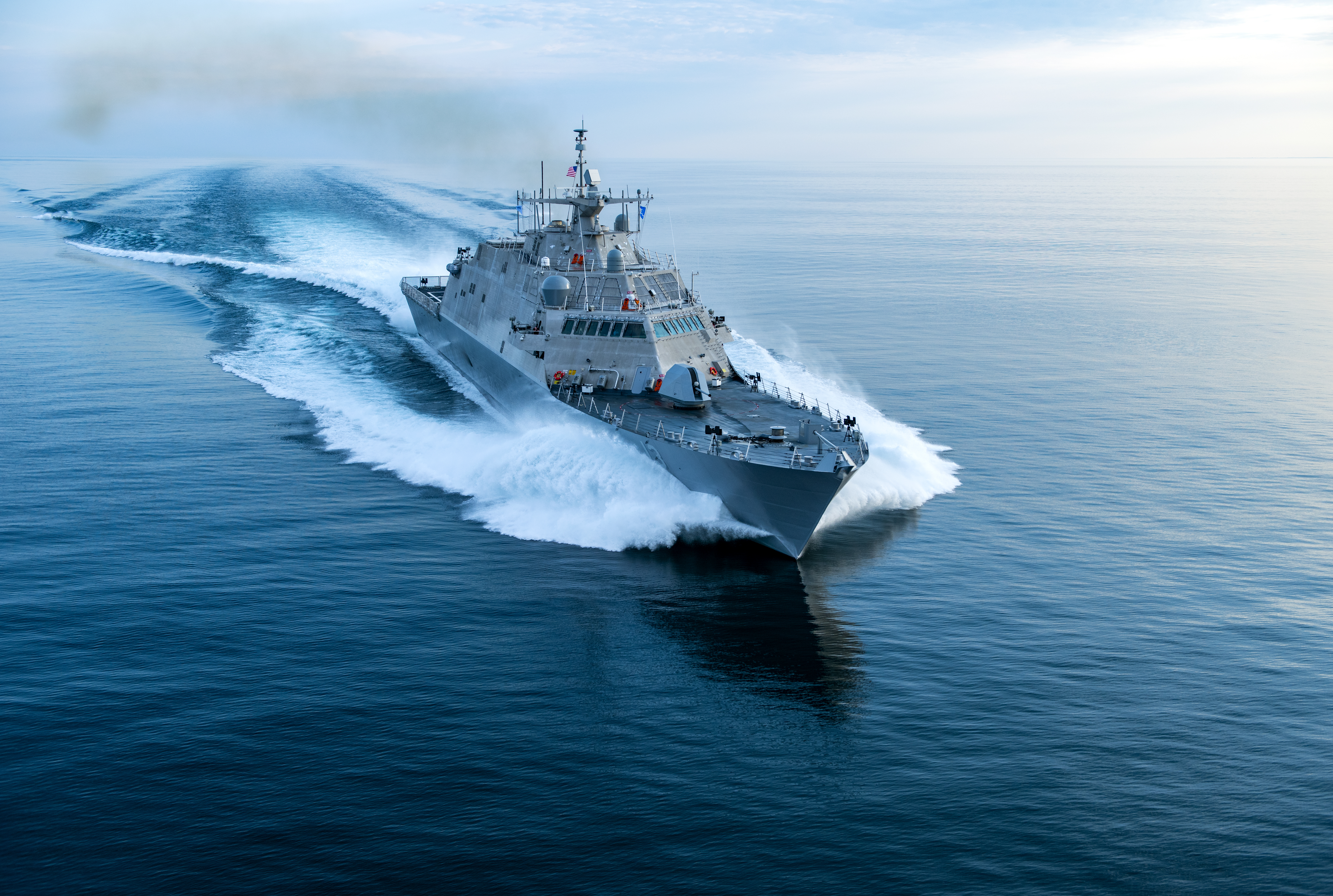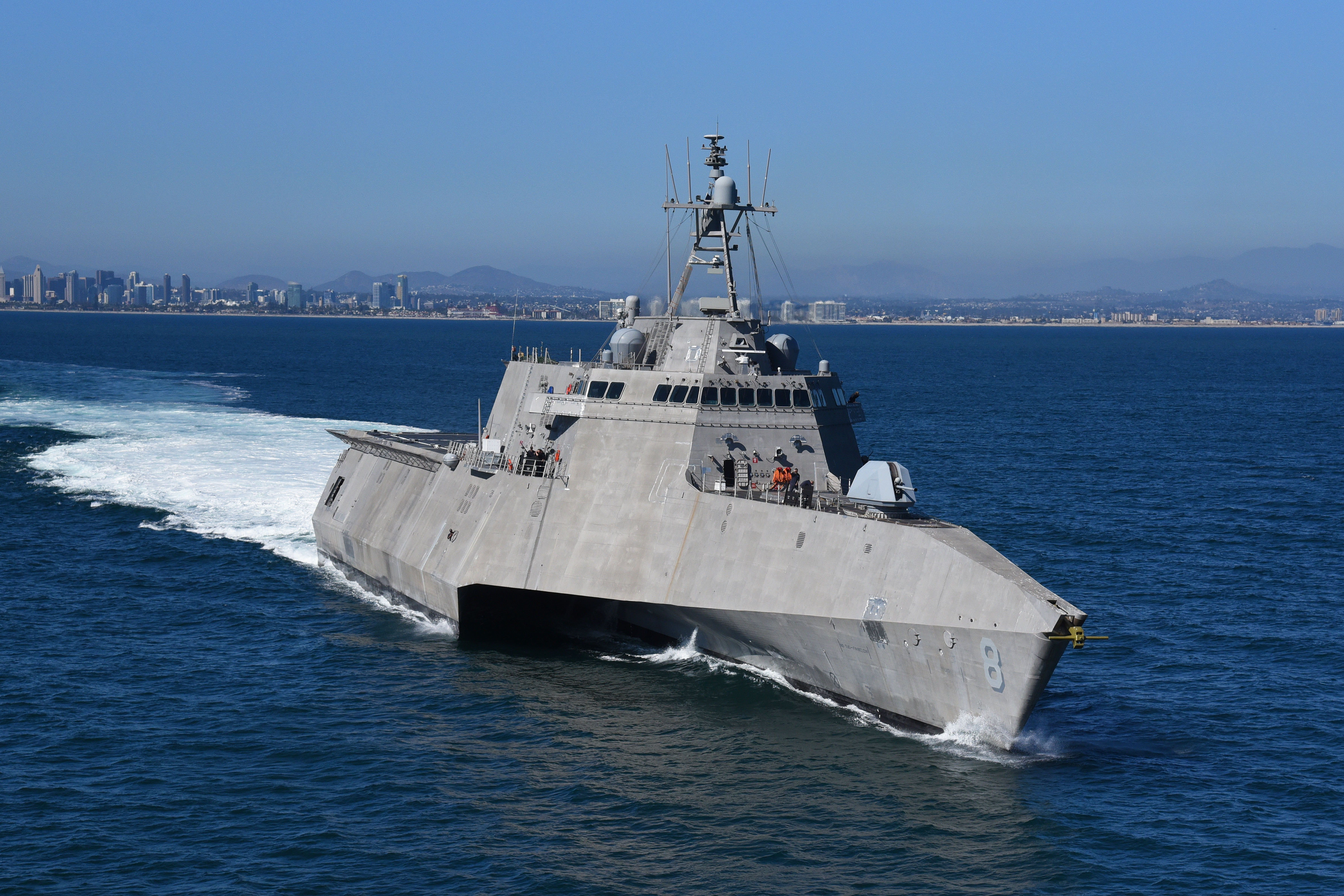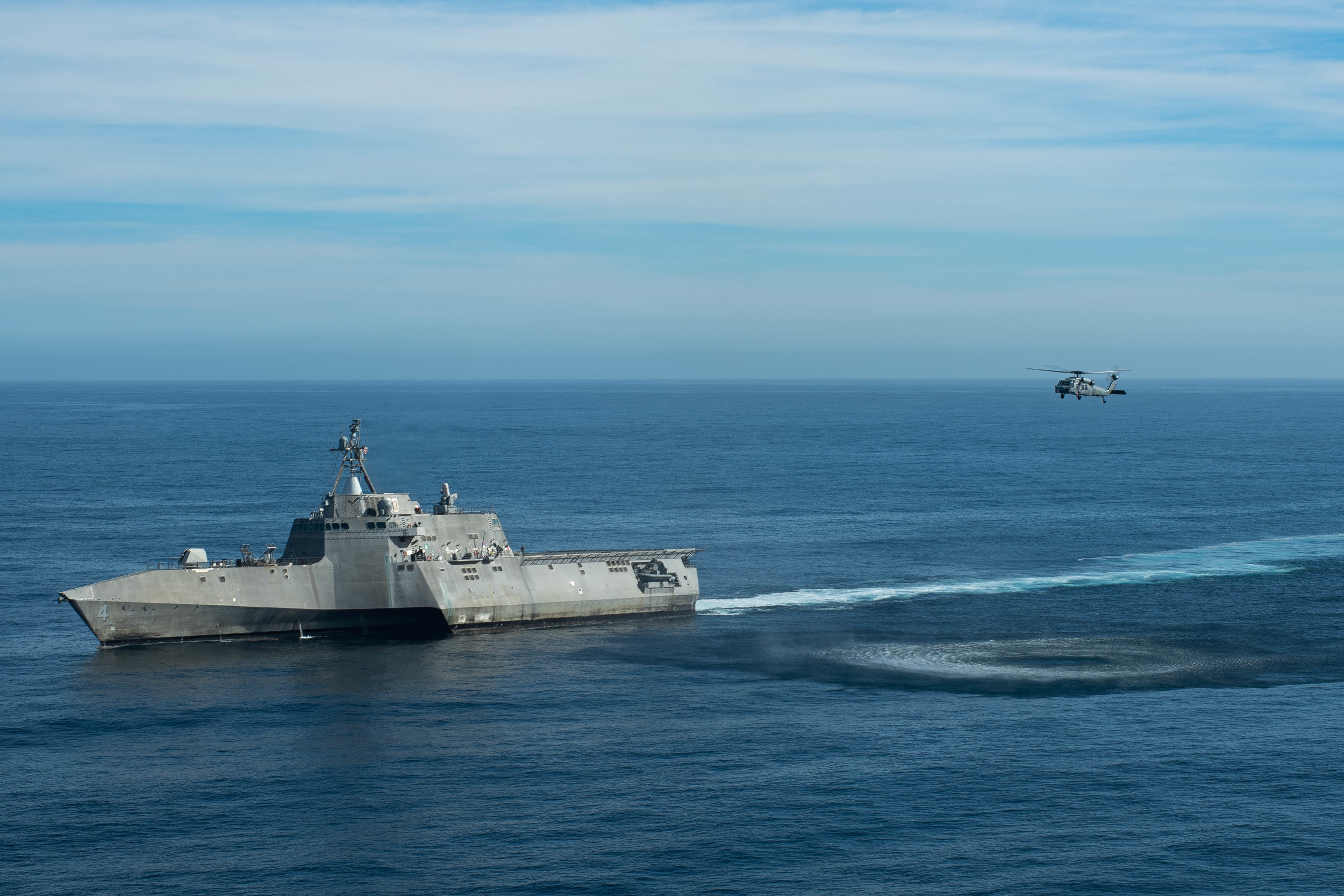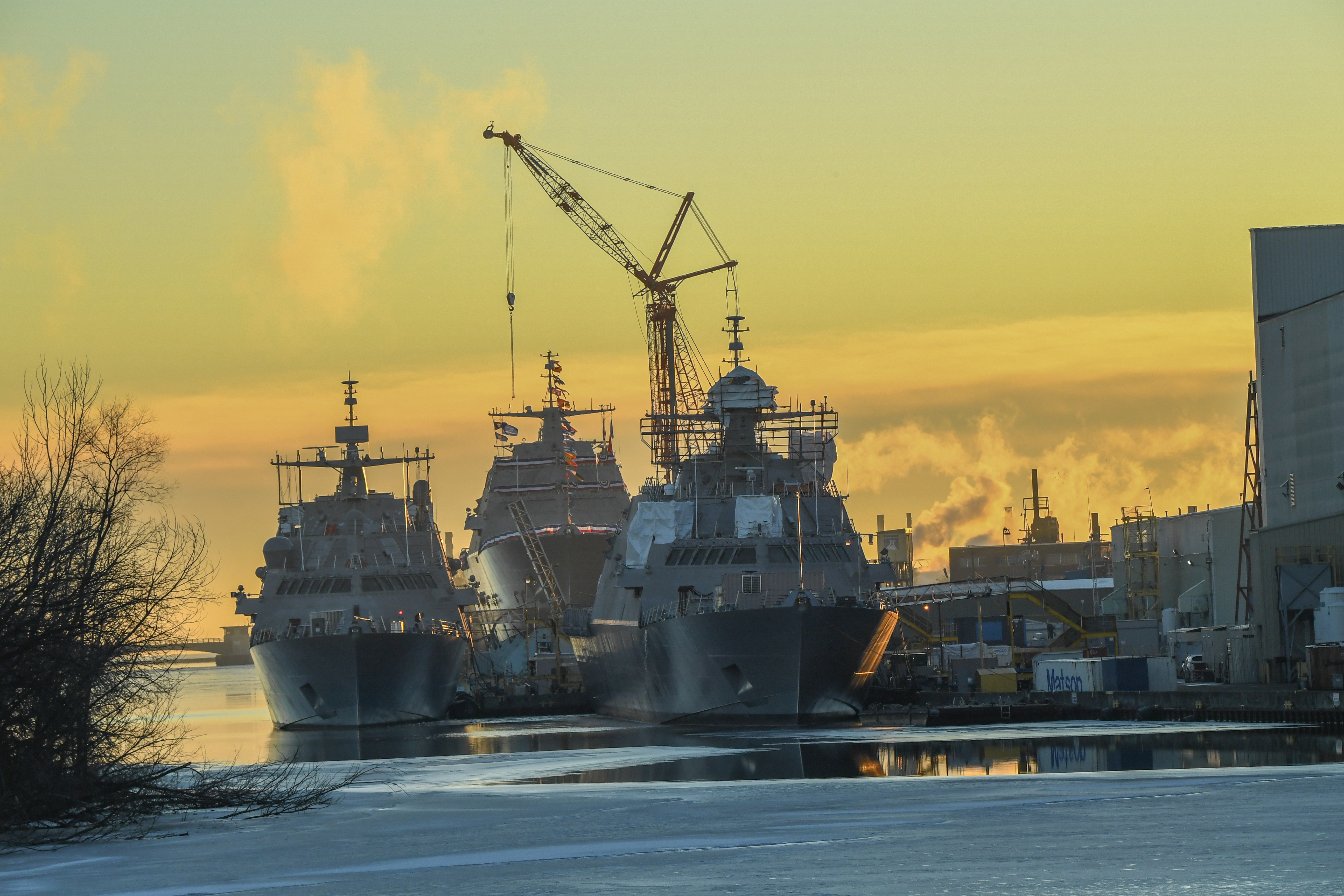
ARLINGTON, Va. – The Littoral Combat Ship mission package program office considers itself to be out of the technology development business and fully into testing and production, the program manager said last week.
All three of the LCS mission packages are in some form of testing this fiscal year and will hit various initial operational capability milestones in Fiscal Years 2019, 2020 and 2022, Capt. Ted Zobel said at a briefing during the Surface Navy Association’s annual national symposium. However, the anti-submarine and mine countermeasures mission packages’ anticipated initial operational capability dates have slipped a bit again, despite the progress being made on testing the mission package equipment on two separate LCS hull variants.
The furthest along of the three mission packages is for surface warfare. That package is set to deploy on as many as three LCSs later this fiscal year, with the initial version of the mission package having already reached IOC in 2014 and 2015. The program office is working as fast as it can to finalize the addition of the Surface-to-Surface Missile Module (SSMM) – a Longbow Hellfire missile – in the hopes that one of the ships set for a 2019 deployment, USS Detroit (LCS-7), could take the missile along on its maiden deployment.
Beyond the 30 mm and 57 mm guns, SeaRAM anti-ship missile defense system and small rigid-hull inflatable boats already in the surface warfare mission package, the Longbow Hellfire missile would give the LCS a greater ability to go after fast attack craft (FAC)/fast inshore attack craft (FAC/FIAC). That threat is especially prevalent in the Persian Gulf, where Bahrain-based LCSs would patrol, due to Iranian small boats, and could be relevant in crowded waterways in the Pacific for the Singapore-based LCSs.
“I think it’s pretty fair to say that SSMM, which is a Longbow Hellfire, really is the Navy’s premiere FAC/FIAC weapon,” Zobel said in his presentation.

SSMM completed its developmental testing and began operational testing two months ahead of schedule, Zobel said, and is on track to hit IOC for the Lockheed Martin-built Freedom-variant hulls in the second quarter of FY 2019. Throughout 79 live-fire shots during developmental, integrated and operational testing, SSMM has maintained a 91 percent successful engagement rate. The Navy is buying the first module this year and should wrap up procurement by 2024, but with the modules used for testing the Navy may be able to complete the test, integration and installation work in time for the Detroit deployment.
SSMM integration with the Austal USA-built Independence-variant hulls is a few months behind the Freedom-variant counterpart. USS Jackson (LCS-6) has been identified as the ship that will support SSMM integrated testing for the Indy variants, which should start in the third quarter of FY 2019.
Originally slated as the last to deploy, the anti-submarine warfare mission package will now be the second to reach IOC. This package centers around a variable-depth sonar that puts a transmitter and receiver in the same part of the water column, Zobel said.
“I believe this mission package represents a game-changing capability in the fleet,” he said, echoing previous comments from Navy officials about the leap-ahead improvement the VDS represents compared to current technology destroyers and other surface ships use to detect underwater threats.
In November the program office accepted a pre-production test article and began land-based testing in December.
Just last week the program office began testing at the Atlantic Undersea Test and Evaluation Center in the Bahamas, using a contracted civilian vessel to haul the mission package equipment. After this ongoing testing is finished, the program office will take the mission package and send it to San Diego, where USS Fort Worth (LCS-3) will be outfitted to accept the mission package and conduct developmental testing in the summer or fall.
Zobel told USNI News after his presentation that the civilian vessel was used for the AUTEC testing to avoid asking an LCS to sail from San Diego around to the Bahamas, the location of the only undersea testing site of its kind.
Congress cut all funding for variable-depth sonar procurement in FY 2019, but Zobel said this funding cut would not hinder the anti-submarine warfare mission package from reaching IOC in FY 2020 – the current plan, but a slip from a previous IOC prediction of 2019. The captain made clear that there was sufficient research and development funding to cover the AUTEC testing and the Fort Worth developmental and operational testing in California.
“If the system continues to perform the way it is, I can’t help but assume that support will follow,” he told reporters of congressional support for procurement funding.
“The zeroing of the funds in 2019 do not impact our ability to get to test in ‘19. That plan is still on glideslope, and we should be able to meet our IOC in ‘20.”

Now the final package to reach IOC, the mine countermeasures package is headed for an FY 2022 IOC declaration, another slip compared to a previous 2021 IOC date and even earlier dates before that.
The Independence-variant ships are now certified to operate all three aviation assets – the COBRA Coastal Mine Reconnaissance system, the Airborne Laser Mine Detection System (ALMDS) and the Airborne Mine Neutralization System (AMNS) – after COBRA was certified recently. COBRA testing aboard Freedom-variant hulls will begin next month and should be certified by the end of 2019, Zobel said.
Integrated testing on the Unmanned Influence Sweep System (UISS) and the Knifefish unmanned underwater system began on USS Independence (LCS-2) just before Christmas and wrapped up last week, Zobel said. Those systems will be certified for Independence-variant hulls by the end of the year, and will be certified on the Freedom variant by next year.
In a separate news release, Naval Sea Systems Command noted that the UISS and Knifefish integrated test event was important because it validated the communications link between the ship and these two offboard systems as well as their ability to be launched and recovered – the final two to be tested on the Indy variant, after successful testing with the MH-60S helicopter and MQ-8B Fire Scout unmanned helicopter.
The entire mission package will go through developmental and operational testing in FY 2021 and will reach IOC in 2022, according to Zobel’s presentation.

Separately in LCS news, the Navy last week awarded Lockheed Martin a contract for one FY 2019 Freedom-variant ship, LCS-31. In December the Navy awarded two 2019 ships to Austal and declined to say whether the third ship was guaranteed to go to Lockheed Martin or would be awarded competitively. With LCS-31 now on contract, Lockheed Martin now has 16 ships built, in construction or on contract, compared to 19 for Austal. This contract is for the last LCS, as the Navy will move to the frigate as its small surface combatant beginning in FY 2020.





